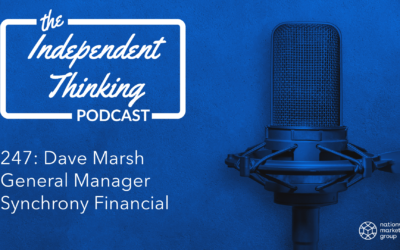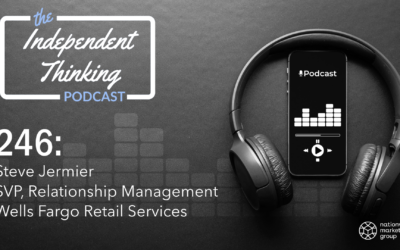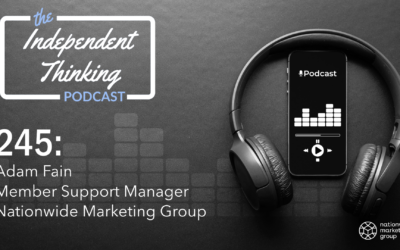One of my absolute favorite parts about working at Nationwide Marketing Group is that I get to talk to our members daily. Although every business and business owner is different, one of the more consistent threads I hear from members is, “How can I maintain margin integrity in today’s economic battleground within the consumer electronics category.”
Having started in the consumer electronics business as a commissioned salesperson, I am not ignorant to the slow and steady erosion of margin within the category. I remember the pride of closing sales with television sets that were over 40% gross margin and audio that was well over 60%. Although some may fault me for being blunt, those days are over. Chasing these deals is about as effective a sales strategy as tilting at windmills. Does this mean you should throw in the towel?
Absolutely not.
According to the latest statistics, more than 70% of all large screen television purchases are still made in a physical storefront. Although the purchase journey starts almost exclusively online now, consumers still prefer to put their eyes on their latest purchase before making a final decision. Given the complexities and expense in shipping large and ultra-large format televisions, this is a trend that is not likely to change in the near term.
What does this mean for independent retailers? Opportunity.
Consumer electronics drives meaningful amounts of traffic to your store.
More than 38,000,000 television sets are forecasted to be sold this year. To help put this number in perspective, that’s only 10 million units less than the entire large appliance unit projection. When combined with a buying cycle half that of other categories – appliances included – consumer electronics is the largest single driver of traffic you could have in your store.
But even more important than traffic, I would argue the profit potential is greater on core consumer electronics than categories such as furniture, bedding, or appliances.
The path to these profits begins with a sales strategy – not unlike other categories you may sell. In my past, we used to call this our F.O.C.U.S. guide, an acronym we used to measure key attachment categories.
It was an incredible system which drove incredible profits and even higher customer satisfaction. At its core, F.O.C.U.S. was a way to track attachment dollars to television sales. I could write an entire short story on F.O.C.U.S. but the editor would cut me off. So, here are the cliff notes:
Furniture. It was pretty simple – either you were going to wall mount your television or you needed something to put it on. Furniture stands, audio racks, mounts, and other adjacent category furniture should be a staple of your showroom.
audiO. Does your sales team have an audio demo they are showing to every customer who buys a television? Can they connect the emotions of a racing scene, a concert, or action scene to your customer? Do you carry more than $199 soundbars? If your answer was no to any of these questions, you are missing the third largest contributor to profit on your sales floor.
Connectivity. All that great gear your customer just bought isn’t going to magically connect itself without cables. Think of your own experiences spending hours in a store, meticulously picking out new purchases only to find out you’re missing a cable or component after you get home.
Ultimate performance guarantee. This was our version of warranty, which is sadly overlooked by the industry. I’ll get to percentage goals in a little, but the absolute minimum warranty percentage any salesperson in your store should be at is 5%.
Service. Though it was our last category in the acronym, service was the third largest margin contributor after audio and warranty.
This may feel overwhelming, especially for your sales staff. But through the lens of your customer, these are all things they will need in order to get the maximum enjoyment out of their purchase.
The minimum performance expectation for these categories combined was 60%. As an organization, our salesperson median was in the high 70s, with some stellar performers over 100%. This means we were attaching $.75 of high margin product for every $1 in television sold.
It was doable then; it is doable now. Whether you use F.O.C.U.S. or your own system, retailers who strive for these levels of performance in consumer electronics are succeeding and thriving.
If you’re interested in how to implement a consumer electronics strategy in your retail environment, let’s talk. See what over 5,000 of the largest independent retailers in the United States have already discovered.
This article originally appeared in the May 2020 issue of Retail Observer.




